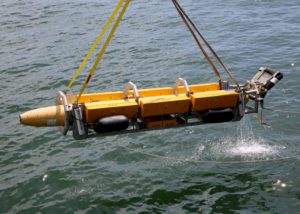
ANNAPOLIS, Md. -- A Navy official said the service's Littoral Combat Ship (LCS)-based mine countermeasures (MCM) mission packages (MPs) needs help from industry to work the mission faster. “What’s really the enemy? It’s time…I can never get you to guarantee there are no mines in the water, but given enough time I can pretty safely assure you that you can do what you need to do – but time is the enemy,” Capt. Chris Merwin, Director for Mine Warfare at…

 By
By 











